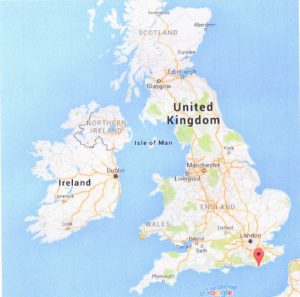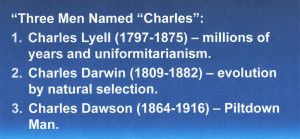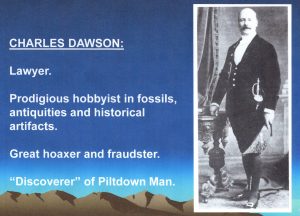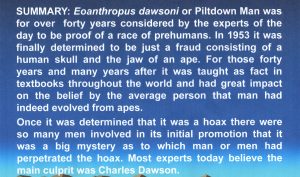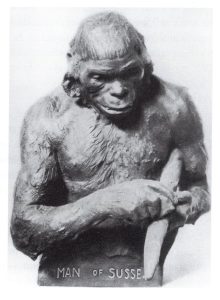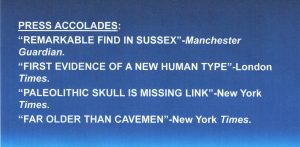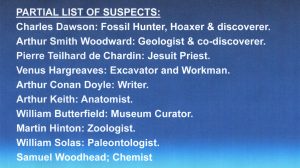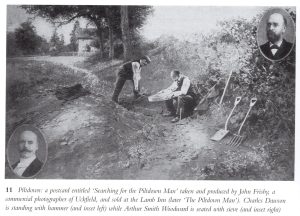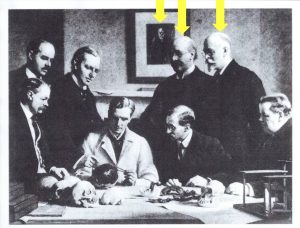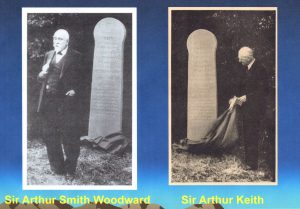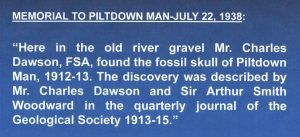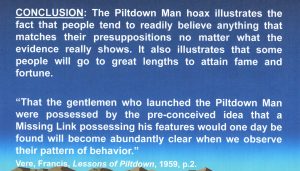This article is based on one section of a PowerPoint presentation that I did for the Design Science Association of Portland in May of 2024. The title of the talk was “Evolution’s 14 Greatest Frauds” where Piltdown Man was listed as fraud number 10. Most people have heard of the Piltdown Man hoax. But what is Piltdown? It is a small town in the county of Sussex where Piltdown Man was discovered, or should I say fabricated. See the town’s location on the map in Slide #1.
Slide #1
It is important to remember three 19th century men with the first name “Charles” who were deeply involved in the attempts to destroy the Christian worldview in the Church specifically, as well as generally in the western world. These men are listed in Slide #2.
Slide #2
Lyell and Darwin are well-known for deep time, uniformitarianism, and/or evolution during the historical period called the Enlightenment. But who is Charles Dawson? His noteworthy “attributes” are listed in Slide #3.
Slide #3
What exactly was Piltdown Man that first came on the scene in 1912? Slide #4 provides a summary description.
Slide #4
In Slide #5 is the 1922 reconstruction of Piltdown Man by artist Aime Rutot based only on the skull and jaw supposedly dug up by Charles Dawson in 1912.
Slide #5
When the remains of Piltdown Man were presented to the Geological Society on December 18, 1012, the press reaction was one of excitement as seen in Slide #6.
Slide #6
In Slide #7 is a listing of some of the men who have been accused of being a conspirator or a co-conspirator of the hoax.
Slide #7
Primary work of the hoax was that the skull of a man had been treated to look old, and an orangutan mandible had been doctored as shown in Slide #8.
Slide #8
The Slide #9 photo of a plaster cast of the Piltdown Man skull made in 1912 reveals the darker area of the cranium and the mandible as original bone. The white areas of the face and jaw have been reconstructed.
Slide #9
In the photo postcard (Slide #10) entitled “Searching for the Piltdown Man,” Charles Dawson is standing with the hammer, and Arthur Smith Woodward is seated with a sieve at the gravel pit in Piltdown.
Slide #10
The painting in Slide # 11 was done by John Cooke. It is an artistic interpretation of a meeting that was held on August 11, 1913 at the Royal College of Surgeons. The artist succeeded in transmitting a view that there was an undeniable unity by all of science on the interpretation of the Piltdown Man skull. Notice the image of Charles Darwin in the background looking down on the proceedings with apparent approval (left-hand arrow). Charles Dawson is below the center arrow and Arthur Smith Woodward is below the right-hand arrow.
Slide #11
On July 22, 1938, as a lasting tribute to Dawson and his Eoanthropus dawsoni, a stone monolith made from carboniferous sandstone was erected at Piltdown close to where the skull fragments had been found. Both Woodward and Sir Arthur Keith made speeches on the occasion.
Slide #12
In Slide #13 is the wording that was on the stone monolith.
Slide #13
Literally thousands of articles, papers, and books were written between 1912 and 1953 promoting the authenticity of the findings at Piltdown. Hundreds of articles and books have been written since 1953 highlighting the shortcomings of mankind that were demonstrated by the hoax.
Slide #14
J.D. Mitchell
